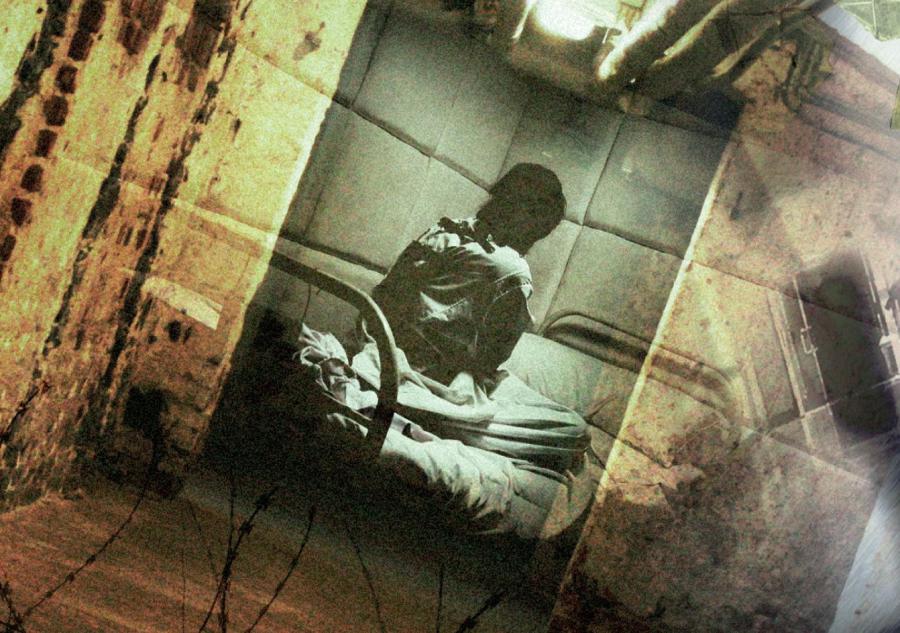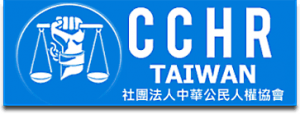
Psychiatry's restraint on patients deemed cruel by UN
Restraint is a barbaric business in psychiatry. It would be an understatement to say it was savage.
KAOHSIUNG, TAIWAN, October 2, 2022 /EINPresswire.com/ -- In the "treatment" of psychiatry, apart from electric shock, the most criticized thing is coercive restraint.
In the July 2021 guidance on community mental health services, the World Health Organization clearly pointed out that the right to Liberty and security of person in the CRPD underscores actions to address coercion by prohibiting the deprivation of liberty based on a person’s disability. Several other rights of the CRPD, including Freedom from torture or cruel, inhuman or degrading treatment or punishment and Freedom from exploitation, violence and abuse, also prohibit coercive practices. such as forced admission and treatment, seclusion and restraint, as well as the administering of antipsychotic medication, electroconvulsive therapy (ECT) and psychosurgery without informed consent. [1]
Restraint is common in psychiatric wards despite a lack of evidence that this practice benefits patients.
Restraint has a long history, as early as 200 years ago, psychiatry in the United States and Britain used this method to intimidate and punish mental patients. This practice, in the early nineteenth century, Western medicine also advocated bloodletting to save people in the old era, and the forced restraint of mental hospitals seems to be understandable. But now that we have entered the 21st century, the medical staff in the mental ward still use physical violence to stop the patient's movements from time to time, and then give injections. I can't help but ask, has there been no better development in the past two hundred years? Is this "for the benefit of the patient"?
The reports of victims to the CCHR Taiwan (Citizens Commission on Human Rights Taiwan) are alarming.
After Ms. Hsu was admitted to the hospital, the side effects of psychotropic drugs caused her to lose her appetite and did not eat for a day. As a result, medical staff threatened to insert a nasogastric tube and give her an intravenous therapy. She was so frightened that she began to struggle, and the psychiatric medical staff violently attacked her, restraining her limbs. The security guard stuffed her head and face with a pillow, and then punched the pillow, indirectly hitting her face. When there was a man nearby, the nurse took off Miss Hsu's pants, asked her to put on a diaper, and said, "If you don't want to wear a diaper, you can insert a catheter." In this way, Miss Hsu was restrained for two whole days.
May believes that she has a good sense of disease and cooperates with the treatment from beginning to end. Because of the adjustment of the medicine, her psychiatrist recommended that she be hospitalized for a few days for observation. May couldn't sleep one night and walked quietly and slowly at the end of the corridor, but the guard asked, "What are you doing?" and grabbed her arm. May was startled, screamed, and fell to the ground. Next, a number of nursing staff suddenly rushed towards May, including the resident doctor who was on duty that night, and pressed May's limbs. The nurse handed the guard two pillows, and the guard pressed the pillow on May's face. He hit the pillow with his fist, and May's face was under the pillow. During the whole process, all the medical staff and guards cooperated seamlessly, as if they had experienced many exercises. If the location is not in the "psychiatric ward", but somewhere else, passersby will definitely call the police if they see it.
May recalled and said bitterly: "Didn't the psychiatrist tell me that everything they do is to protect the patient? Why do they take me as a prisoner now, I feel insulted by them. The psychiatrist tied my limbs, are they punishing me? Or is this a means of humiliating the patient?" The petite woman, May, was still restrained for nine hours after being sedated.
The restraint of Japanese psychiatry has tied people to death, and it was also on international news last year (2021). [2] KANAZAWA, Japan — Kazuya Ohata had problems sleeping and had voluntarily checked into a psychiatric ward on several occasions after being diagnosed with schizophrenia. But a 2016 visit, at the age of 40, proved to be his last. Eight days after being admitted, he was tied to his bed. Six days later, after being released from the restraint, he died.
In the case of Ohata, the patient with schizophrenia, the hospital initially said he died of heart failure. His parents commissioned a separate autopsy that showed he had suffered a deep-vein thrombosis after being tightly bound.
In a landmark ruling in 2020, Nagoya’s High Court awarded the family 35.2 million yen ($320,000) in damages, concluding that the restraint was “illegal.” It is the first time a Japanese court has issued such a ruling, and the hospital, with the support of the Japan Psychiatric Hospitals Association (JPHA), is contesting the decision.
The UN report also mentioned that the rights of psychiatric patients have always been a neglected topic in the field of global mental health. In psychiatric wards, coercive restraint is condoned by society, and the Convention on the Rights of Persons with Disabilities (CRPD) is severely violated and ignored. [3]
The CCHR Taiwan (Citizens Commission on Human Rights Taiwan) calls on the authorities to minimize the coercive restraint of this near-lynching and strictly record and control it. In the psychiatric community, there is a growing call for a fundamental rethinking of the creation and training of psychiatric knowledge and a renewed emphasis on the interdependence of mental and social health. The UN General Assembly's Special Rapporteur on the Human Rights Council reminds psychiatrists around the world that more effective and humane ways are needed to promote people's mental health and well-being. “The global message is clear: there can be no good mental health without human rights.” [4]
[1] https://www.who.int/publications/i/item/9789240025707
(p.38)
[2] https://www.washingtonpost.com/world/asia_pacific/japan-mental-health-patients/2021/06/18/e07334f2-c2a7-11eb-89a4-b7ae22aa193e_story.html [3]https://previous.ohchr.org/en/NewsEvents/Pages/DisplayNews.aspx?NewsID=26039&LangID=E
[4] https://documents-dds-ny.un.org/doc/UNDOC/GEN/G20/094/45/PDF/G2009445.pdf?OpenElement
Eric Tung
CCHR Taiwan
+886 7 722 8011
email us here
一名精神科受害者的心聲
Distribution channels: Culture, Society & Lifestyle, Healthcare & Pharmaceuticals Industry, International Organizations, Politics, World & Regional
Legal Disclaimer:
EIN Presswire provides this news content "as is" without warranty of any kind. We do not accept any responsibility or liability for the accuracy, content, images, videos, licenses, completeness, legality, or reliability of the information contained in this article. If you have any complaints or copyright issues related to this article, kindly contact the author above.
Submit your press release

